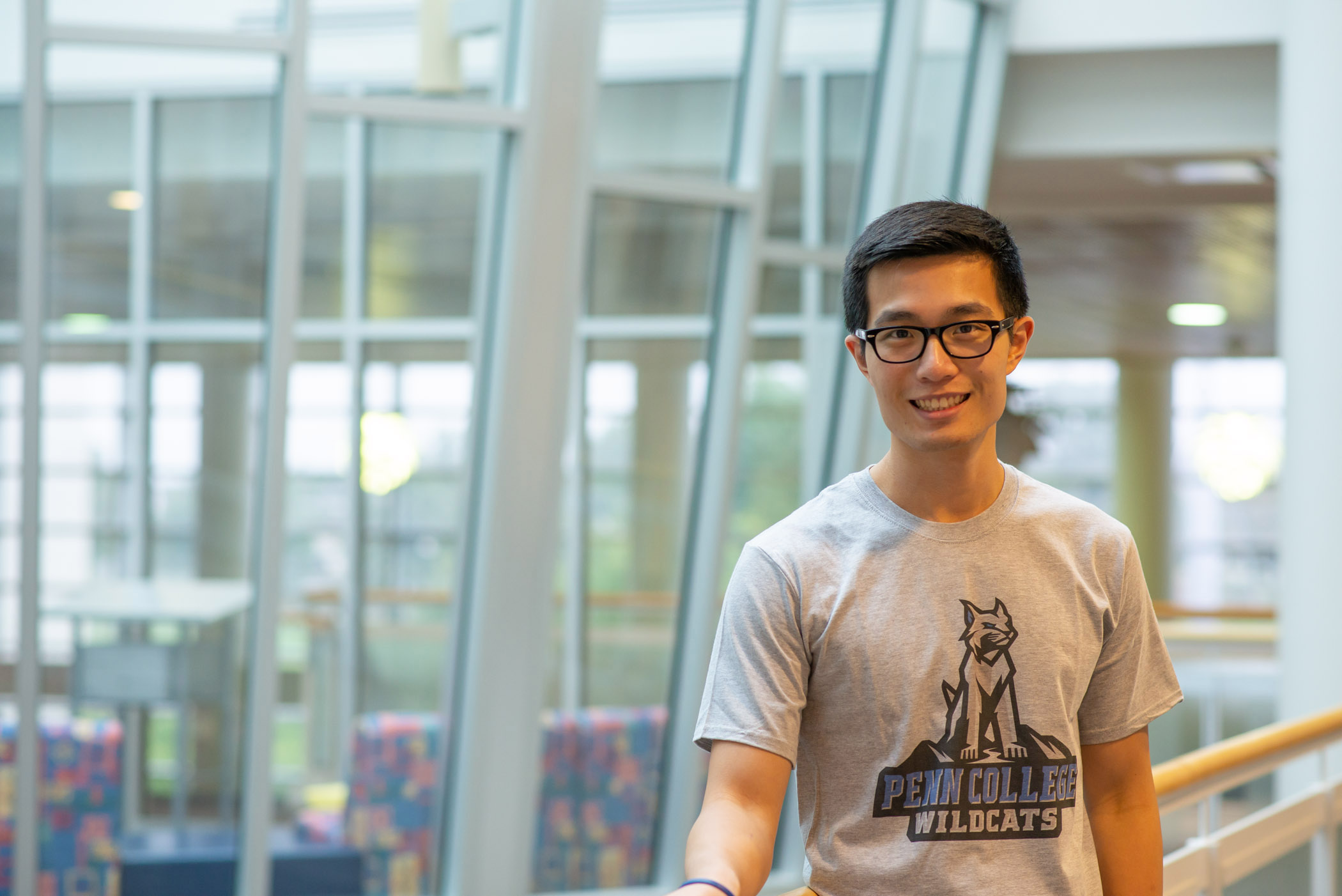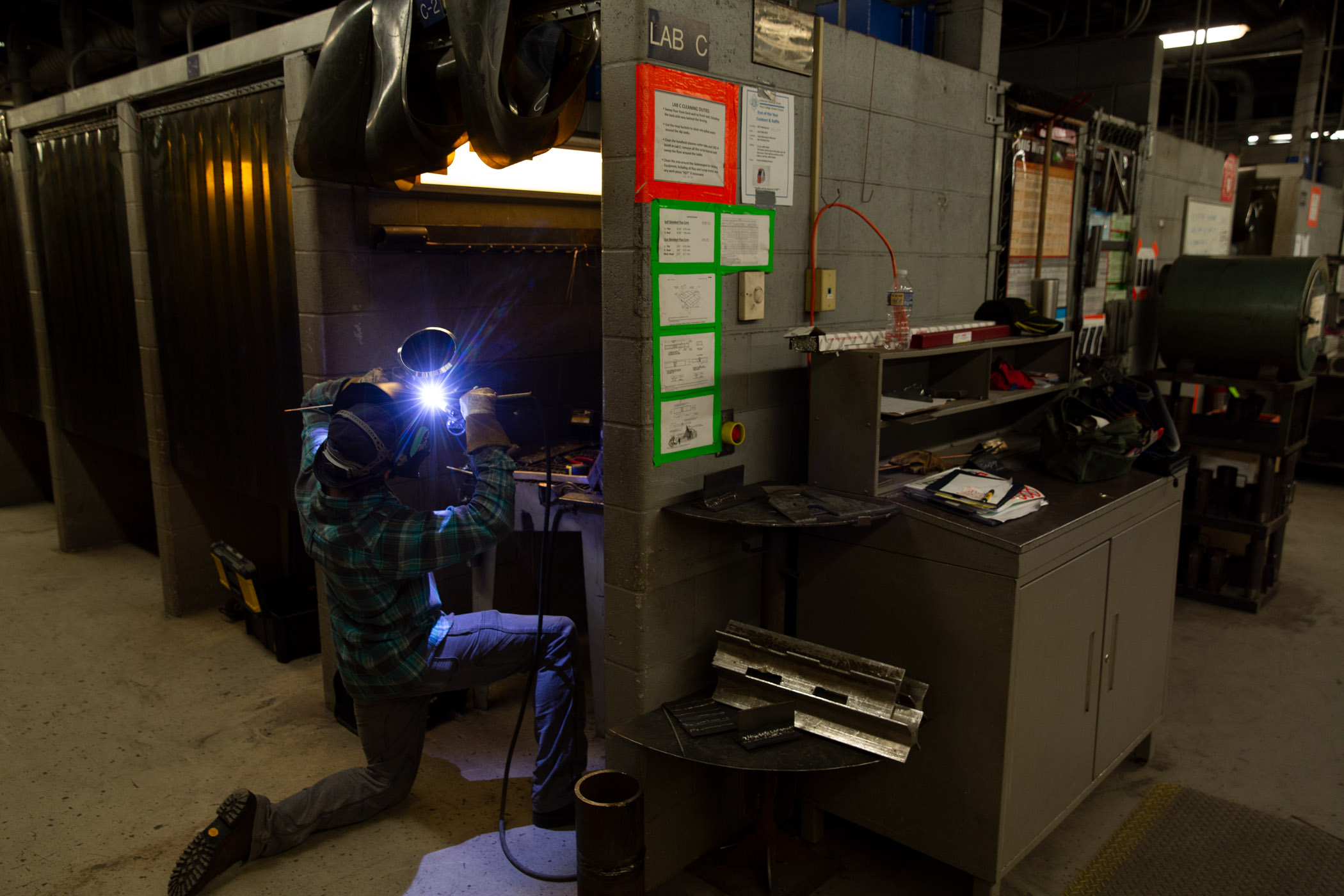Impact Report

Where will they learn?
Making students real-world ready means providing hands-on education in the very technologies they will use in their careers. Pennsylvania College of Technology's facilities provide an ideal place to prepare for tomorrow.
Pennsylvania College of Technology nimbly responds to the demands of industry – and the needs of its students. Making students real-world ready means providing hands-on education in the very technologies and practices they will use in their careers.
Meeting students' needs also means providing a well-rounded, full college experience that includes academic support systems, extracurricular activities and competitive athletics.
Penn College invests in facilities that provide an ideal place to prepare for tomorrow.
Expanded welding labs cut waiting list
According to the American Welding Society, half of the nation’s total gross national product is comprised of welding-related labor, products and services.
At Pennsylvania College of Technology, welding is one of the institution’s most popular programs, with more than 400 students enrolled in its bachelor’s, associate and certificate majors. Yet the numbers are not enough to fill the positions waiting for them.
As in many fields, companies are positioned to grow – but they need qualified employees to do so.
“Our graduates have a nearly 100 percent job-placement rate, and the demand for their skill set is only going to increase in the coming years with an aging welding workforce eyeing retirement,” said David R. Cotner, dean of industrial, computing and engineering technologies, who began his Penn College career as a member of the welding faculty.
According to Cotner, many Penn College welding students secure industry positions long before commencement. He said starting salaries for recent four-year graduates range from $55,000 to $80,000 and from $38,000 to $65,000 for two-year graduates.
For several years, many of the prospective students who got the word that welding is an excellent career, and that Penn College is an ideal learning place, were placed on waiting lists to enter the college’s welding programs. The college’s Lycoming Engines Metal Trades Center did not have enough space to meet the demand.

Thanks to an expansion to the center that approximately doubles the size of the college’s welding instructional space, the Fall 2019 first-year class accommodated all qualified welding-program applicants, filling nine class sections. Last year, the college had to turn students away after filling seven first-year class sections.
The expansion is funded in part by a $2 million grant from the U.S. Department of Commerce. The Economic Development Administration grant, combined with a $3 million match from the college, paid for a 35,000-square-foot expansion that can accommodate up to 60 more students each year.
In addition to expanding the number of students who can learn in the space, the addition expands the skills that students will learn. Industry partners, alumni and other supporters have helped to equip the space with leading-edge technology.
- 18 corporations provided over $2 million in equipment value (nearly 100 pieces of equipment) through entrustments, discounts and/or donations of equipment.
- Over $45,000 in cash commitments were made by corporations, alumni and friends.
The space includes a specialized welding room, where air pressure is kept higher than surrounding spaces to keep dust and particles away.
It adds a dedicated CNC robotic welding lab, where equipment manufacturers have entrusted such cutting-edge technologies as a laser welding cell and an electron beam welder – the first to be placed in higher education in the U.S., as well as a CLOOS QRC 320 Upright robot, which has a seventh axis to do coordinated-motion programming.
A nondestructive testing lab – with a dedicated classroom next door – is outfitted with phased array ultrasonic testing units and digital X-ray testing capabilities that allow for new coursework in advanced techniques and a minor in nondestructive testing. A nondestructive testing degree is being considered.
New areas are also dedicated to:
- pipe welding – with additional space in a plaza area outdoors to better replicate working conditions
- fabrication
- rigging and crane operations for larger projects
- Occupational Safety and Health Administration standards training
- two computer labs
The demand for skilled welding professionals is constantly growing. According to AWS, by 2025, the nation’s workforce will need more than 400,000 welders to satisfy the demands of several industries.
Penn College poised to be a pioneer in electron beam welding
Pennsylvania College of Technology welding faculty recently trained on an electron beam welder to prepare for the arrival of such a unit in January 2020. Thanks to a partnership with Cambridge Vacuum Engineering, Penn College will be the first U.S. educational institution to feature an electron beam welder.

